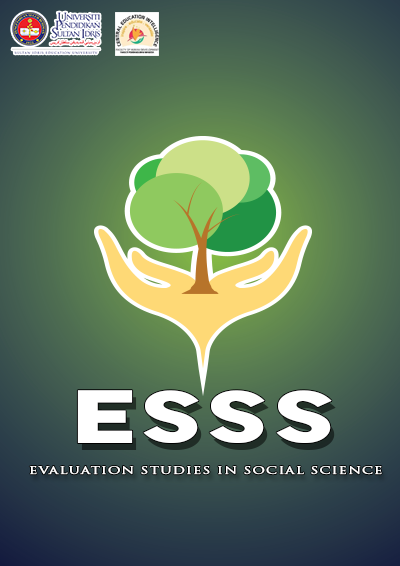PANEL DISCUSSION: Effective Bullying Intervention
DOI:
https://doi.org/10.37134/esss.vol2.sp.8.2021Keywords:
Bullying, causes of bullying, prevention of bullying, mentorship programs for bullyingAbstract
This panel discussion was one of the sessions in the International Multidisciplinary Perspective Research in Education and Social Sciences (IMPRESS21) conference that took place on 7-9 September 2021. The panel discussion focused on the concept of bullying, various types of bullying, awareness of bullying among children, the role of different contenders in bullying, and effective prevention strategies for bullying problems. The panel members were Professor Sefa Bulut (Ibn Haldun University, Başakşehir, Istanbul, Turkey) whose work focuses on the trauma and school violence relationship. The second panelist was Assistant Prof. Thseen Nazir (Ibn Haldun University, Başakşehir, Istanbul, Turkey), whose specialization focus on school bullying, role of different contenders and culture in bullying behavior, and prevention studies and the third panelist was Assistant Prof. Nadire Yildiz (Istanbul Medipol University) whose research interest focuses on mentorship programs with at-risk youth as a preventive intervention strategy. The panel discussion provided a conceptualization and understanding of bullying concepts and their prevention for school-age children. The panelists provided some insight into the nature of bullying, the underlying problems, causes, and consequences of the problems, and the effective prevention and evidence-based prevention programs for school-age children.
Downloads
References
Blakeslee, J. E., & Keller, T. E. (2012). Building the youth mentoring knowledge base: Publishing trends and coauthorship networks. Journal of Community Psychology, 40(7), 845–859.
Choi J, Jeong B, Polcari A, Rohan M. L, & Teicher M. H. (2012). Reduced fractional anisotropy in the visual limbic pathway of young adults witnessing domestic violence in childhood. Neuroimage, 59:1071–9.
DuBois, D. L., Holloway, B. E., Valentine, J. C., & Cooper, H. (2002). Effectiveness of mentoring programs for youth: A meta-analytic review. American Journal of Community Psychology, 30(2), 157–197. https://doi.org/10.1023/A:1014628810714
DuBois, D. L., Portillo, N., Rhodes, J. E., Silverthorn, N., & Valentine, J. C. (2011). How effective are mentoring programs for youth? A systematic assessment of the evidence. Psychological Science in the Public Interest, 12(2), 57–91. https://doi.org/10. 1177/1529100611414806
DuBois, D., & Karcher, M. (2013). Youth mentoring in contemporary perspective. In DuBois & M. Karcher (Eds), The Handbook of Youth Mentoring (2nd ed.). Thousand Oaks: Sage.
Durlak, J. A., & Wells, A. M. (1998). Evaluation of indicated preventive intervention (secondary prevention) mental health programs for children and adolescents. American Journal of Community Psychology, 26(5), 775–802.
Einoff, M. J. (2005). Friends against bullying: Evaluation of a peer-mentoring program to reduce bulling in schools. Unpublished dissertation, University of Connecticut, Connecticut.
Felitti, V. J., Anda, R. F., Nordenberg, D., Williamson, D. F., Spitz, A. M., Edwards, V., Koss, M. P., & Marks, J. S. (1998). Relationship of childhood abuse and household dysfunction to many of the leading causes of death in adults: The Adverse Childhood Experiences (ACE) Study. American Journal of Preventive Medicine, 14(4), 245–258. https://doi.org/10.1016/S0749-3797(98)00017-8
FUTURES Without Violence. Safe, Healthy, and Ready to Learn. (2015). Policy recommendations to ensure children thrive in supportive communities free from violence and trauma. Retrieved from https://www.gadoe.org/External-Affairs-andPolicy/Policy/Documents/Safe-Healthy-and-Ready-to-Learn_Full-Report.pdf.
Herrera, C., DuBois, D. L., & Grossman, J. B. (2013). The role of risk: Mentoring experiences and outcomes for youth with varying risk profiles. New York, NY: MDRC.
Jolliffe, D., & Farrington, D. P. (2007). Examining the relationship between low empathy and self‐reported offending. Legal and Criminological Psychology, 12(2), 265–286.
McCrory, E.J., De Brito, S.A., Sebastian, C.L., Mechelli, A., Bird, G., Kelly, P.A., et al. (2011). Heightened neural reactivity to threat in child victims of family violence. Curr Biol. 21:R947–8. 10.1016/j.cub.2011.10.015
Raposa, E. B., Rhodes, J., Stams, G. J. J. M. et al. (2019). The effects of youth mentoring programs: A meta-analysis of outcome studies. J Youth Adolescence 48, 423–443. https://doi.org/10.1007/s10964-019-00982-8
Shatz C.J. (1992). The developing brain. Scientific American, 267(3), 60-7. doi: 10.1038/scientificamerican0992-60. PMID: 1502524.
Tanner-Smith, E. E., Durlak, J. A., & Marx, R. A. (2018). Empirically based mean effect size distributions for universal prevention programs targeting school-aged youth: A review of meta-analyses. Prevention Science, 19(8), 1091–1101.
Tierney, J.P., Grossman, J.B., & Resch, N.L. (1995; 2000). Making a difference: An impact study of Big Brothers/Big Sisters. Philadelphia: Public/Private Ventures.
Tolan, P. H., Henry, D. B., Schoeny, M. S., Lovegrove, P., & Nichols, E. (2014). Mentoring programs to affect delinquency and associated outcomes of youth at-risk: A comprehensive meta-analytic review. Journal of Experimental Criminology, 10(2), 179–206. https://doi.org/10.1007/s11292-013-9181-4
Tomoda, A., Polcari, A., Anderson C.M., & Teicher, M.H. (2012). Reduced visual cortex gray matter volume and thickness in young adults who witnessed domestic violence during childhood. PLoS ONE 7:e52528. 10.1371/journal.pone.0052528
Wheeler, M. E., Keller, T. E., & DuBois, D. L. (2010). Review of three recent randomized trials of school-based mentoring: making sense of mixed findings. Social Policy Report, 24(3), 3–21.





